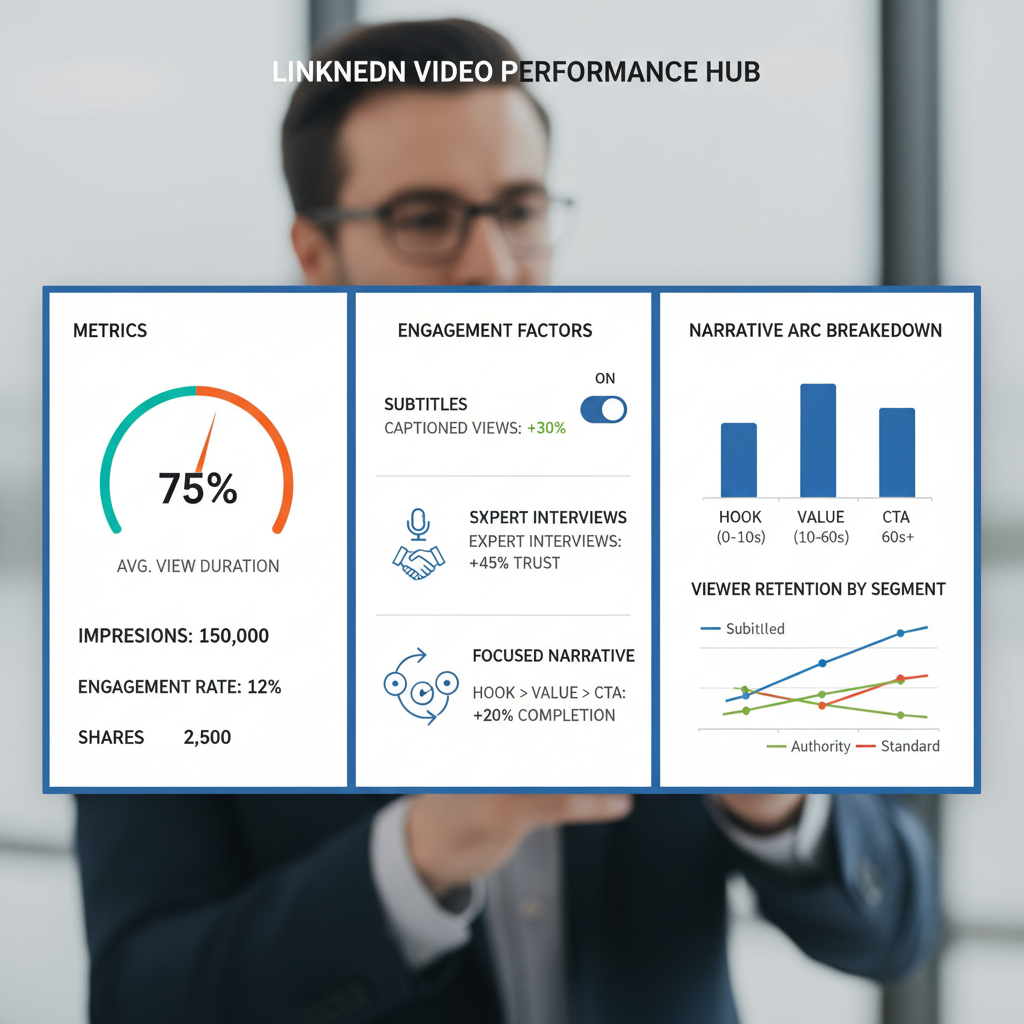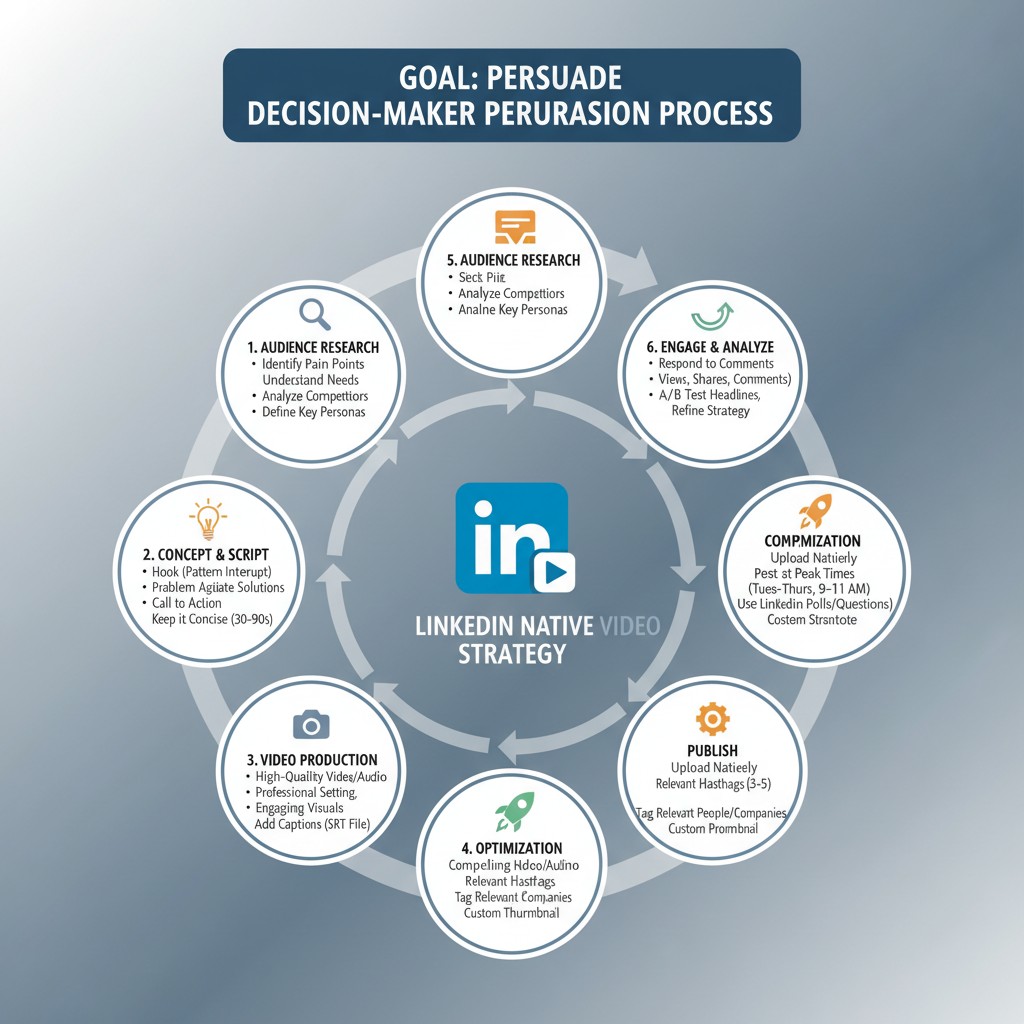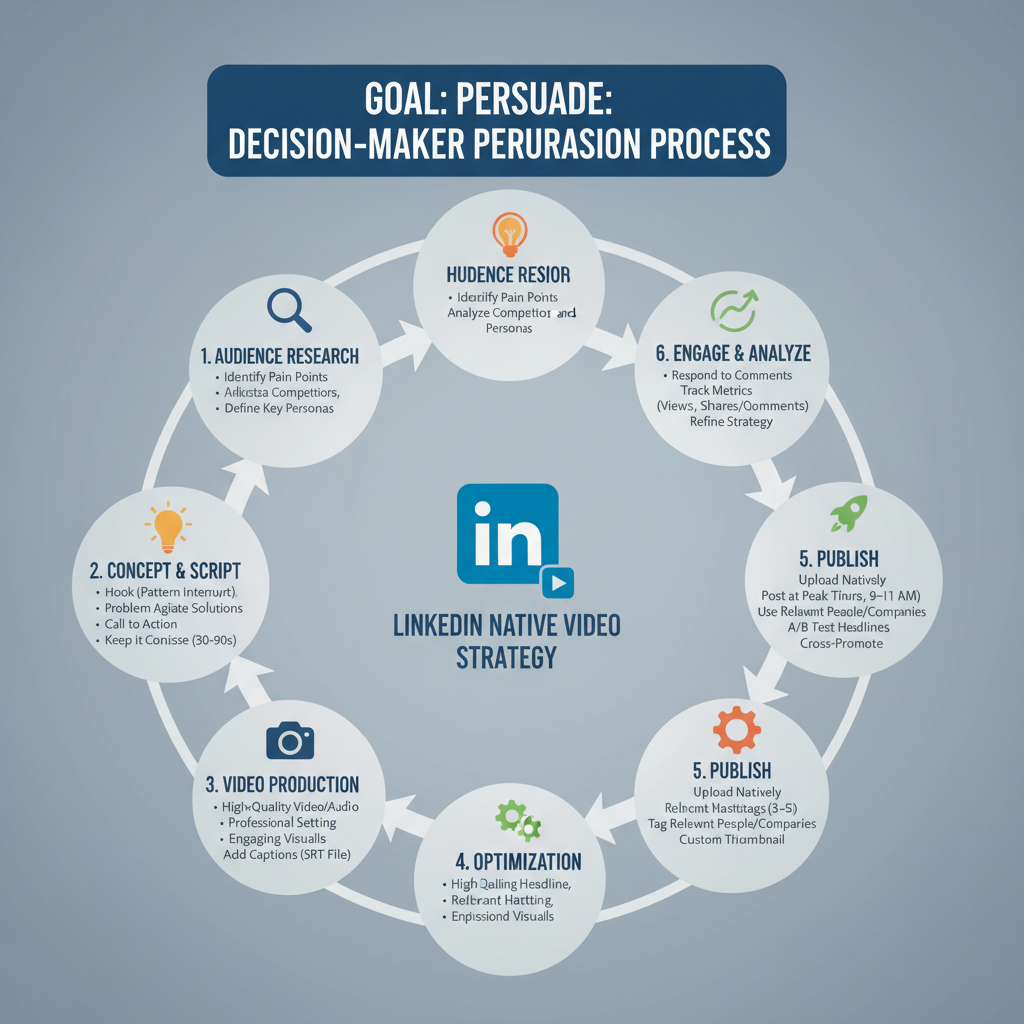LinkedIn Video Strategies for Getting Ideas Approved
Learn how to craft persuasive LinkedIn native videos that target decision-makers, address objections, and win approval for your ideas effectively.

Mastering LinkedIn Videos to Get Your Ideas Approved
Crafting impactful LinkedIn getting your ideas approved videos starts with a strategic, audience-first approach. Whether you’re pitching a new initiative internally or promoting a fresh perspective to an industry network, the way you plan, produce, and share content on LinkedIn determines how effectively you influence decision-makers. This guide outlines proven techniques to identify, persuade, and convert your audience through concise, compelling native videos, ensuring your ideas gain the traction and formal approval they deserve.
Understanding Your Audience’s Decision-Makers on LinkedIn
When it comes to LinkedIn getting your ideas approved videos, success starts with clarity on who you are trying to persuade. In many organizations, decision-makers vary by role, seniority, and department. The first step is to:
- Research job titles and industry sectors relevant to your idea.
- Examine their content interactions: What posts do they comment on or share?
- Study group memberships, followed hashtags, and endorsements.
By understanding these decision-makers’ priorities, you can tailor your video scripts to resonate with their core concerns.

Identifying Common Objections and Challenges
Even the best ideas face barriers—budget constraints, perceived risks, timing, or competing priorities. Before filming, outline likely objections. For example:
- Budget: “We can’t allocate funds this quarter.”
- Risk: “The plan sounds untested.”
- Alignment: “This doesn’t match our current strategy.”
Anticipating these allows you to address them directly within your videos, showing both empathy and strategic thinking.
Planning a Persuasive Video Narrative Arc
Stories persuade better than bullet points. A compelling narrative arc should:
- Introduce the context and stakeholders.
- Present the problem in relatable terms.
- Share the journey toward your proposed solution.
- End with a vision of improved outcomes.
Think of each video as a mini-story, where the decision-maker is the hero and your idea is the guide.

Using Short, Focused LinkedIn Native Videos for Higher Reach
Native uploads on LinkedIn typically outperform external video links in both reach and engagement. Optimal length for engagement usually falls between 60–90 seconds, particularly when pitching ideas that require swift attention.
Key practices:
- Keep intros short to hook viewers within the first 3 seconds.
- Focus on one clear message per video.
- End with a simple, relevant call-to-action (CTA).
Structuring Videos with Problem–Solution–Benefit
One of the most effective structures for LinkedIn getting your ideas approved videos is the Problem–Solution–Benefit approach:
| Stage | Description | Example |
|---|---|---|
| Problem | State a challenge your audience faces. | “Teams are struggling with turnover.” |
| Solution | Introduce your actionable idea. | “Implement cross-training programs.” |
| Benefit | Highlight the positive outcomes. | “Lower recruitment costs and better resilience.” |
Viewers can quickly grasp why your idea matters and what they gain by approving it.
Including Authority Cues: Data, Case Studies, Endorsements
To give your video more weight:
- Integrate credible data and statistics.
- Mention relevant case studies.
- Include short clips or quotes from recognized experts.
Authority cues reassure decision-makers that your proposal rests on solid evidence, not just opinion.
Leveraging Subtitles and Captions for Silent Autoplay
Many users browse LinkedIn during work hours with sound muted. Captions ensure your message gets across even without audio. Use:
- High-contrast text for easy reading.
- Concise phrasing for clarity.
- Automated captioning with manual edits to correct errors.
This small step can significantly improve watch time and comprehension.
Posting at Optimal Times for Target Industry Engagement
Timing matters as much as content. For B2B audiences, engagement frequently peaks:
- Tuesdays to Thursdays
- Between 8:00–10:00 AM or 12:00–1:00 PM (local time)
Test different time slots and monitor performance to refine your scheduling strategy.

Engaging Commenters to Clarify and Reinforce Key Points
When your videos spark comments, treat them as live opportunities to deepen persuasion. Reply promptly:
- Thank them for their input.
- Clarify misunderstandings.
- Provide additional examples or links.
This ongoing dialogue reinforces trust and keeps your idea top-of-mind.
Creating Follow-Up Videos Addressing Feedback or Questions
Sometimes, initial reactions raise new questions. Producing follow-up videos shows responsiveness and commitment. These could:
- Address recurring objections.
- Offer more detail on implementation.
- Share new supporting data.
Follow-ups help maintain momentum around your idea on LinkedIn.
Measuring Watch Time, Completion Rate, and Share Count
Analytics reveal whether your message is landing effectively. Key metrics to track:
| Metric | What It Shows | Improvement Tips |
|---|---|---|
| Watch Time | Audience interest and retention. | Hook viewers early, trim filler. |
| Completion Rate | Percentage viewing to the end. | Maintain suspense until the conclusion. |
| Share Count | Content relatability and value. | Create content worth sharing with peers. |
Refining Video Length, Style, and CTA Based on Analytics
Use your video metrics to make iterative changes:
- Shorten or lengthen videos depending on drop-off points.
- Experiment with different visual styles—talking head, animations, screen shares.
- Test varied CTAs to see which drives more approvals or meetings.
Small optimizations can have a large cumulative impact.
Collaborating with Industry Peers for Joint Idea-Pitch Videos
Co-presenting with respected peers expands your reach and lends credibility. Consider:
- Hosting short panel discussions.
- Co-authoring scripts.
- Featuring client testimonials.
Cross-promotion helps introduce your idea to decision-makers in allied but distinct networks.
Avoiding an Overly Promotional Tone
Finally, remember that decision-makers are more receptive to constructive, insightful pitches than blatant sales spiels. Keep the focus on:
- Solving real challenges.
- Demonstrating mutual benefit.
- Maintaining professional authenticity.
A balanced tone fosters trust, increasing the chances your idea will be approved.
---
Summary: Leveraging LinkedIn getting your ideas approved videos requires insightful audience research, addressing objections head-on, crafting persuasive stories, and deploying native content for higher engagement. By adding authority cues, optimizing posting times, and interacting with commenters, you strengthen relationships and make approvals more likely. Start experimenting with these strategies today to ensure your next LinkedIn video inspires action and secures support from key decision-makers.




